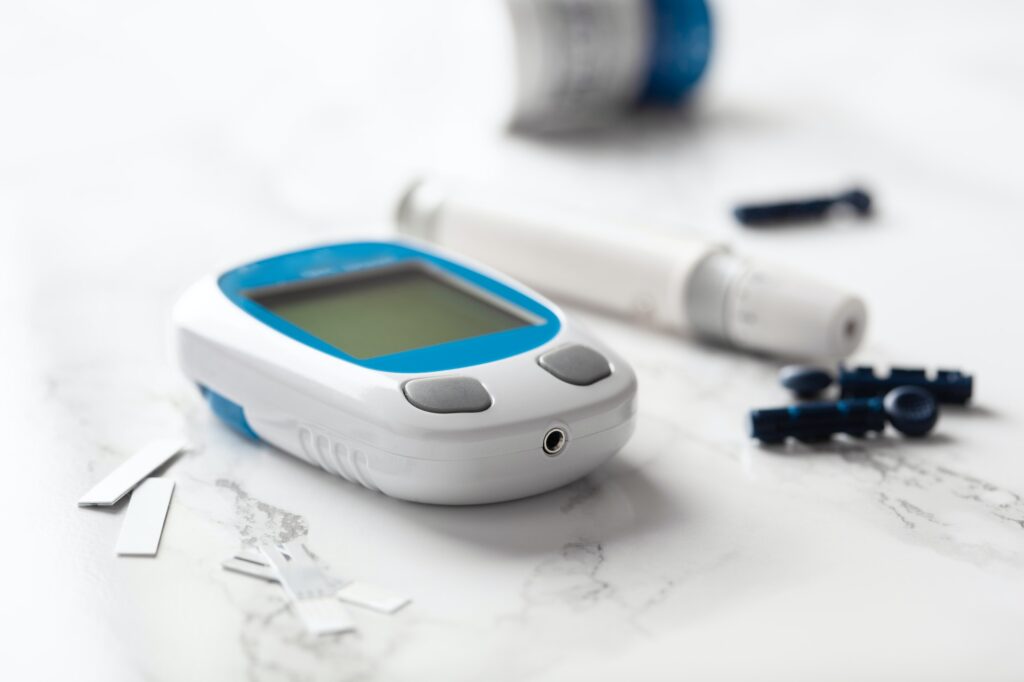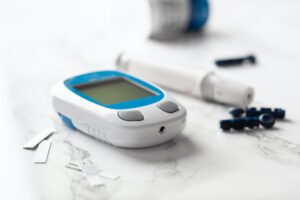Imagine the following scenario…
“Your doctor just called to give you an update on your last blood test. He asks you to take additional tests for your blood sugar. You panic. This is it, you’re diabetic…”
Don’t panic! Let’s take a closer look…
In recent years, doctors have become more vigilant and have started to do additional tests as soon as the sugar level is above 5.6. This allows them to diagnose the early signs of diabetes more quickly.
Type 2 diabetes is the most common form of diabetes. It can occur in 2 ways: either your pancreatic cells do not produce enough insulin or the insulin produced does not do its job well (insulin resistance). In both cases, blood sugar levels rise.
The main risk factors are:
- Gender: men are more vulnerable than women;
- Age: the risk increases with age;
- Overweight and high waistline;
- The level of physical activity;
- Eating habits;
- High blood pressure;
- A history of high blood sugar;
- For women, having given birth to a baby weighing more than 4.1 kg (9 pounds);
- Heredity, ethnicity, and educational attainment.
But let’s go back to our hypothetical scenario above… Your doctor may have ordered the following additional tests: a fasting blood glucose test, an induced glucose tolerance test and a glycated hemoglobin level.
Fasting blood glucose:
This test is done on an empty stomach. It represents the sugar level at the time of the blood test. This rate is not due to the food consumed during the previous evening meal but to the release of sugar produced by the liver at the end of the night.
The induced hyperglycemia test:
This test is done on an empty stomach. You must drink a liquid that contains 75 g of sugar. We then check the sugar that has remained free in the blood after a period of 2 hours.
Glycated Hemoglobin Test:
This test checks the “sugar level” of the last 3 months. At least, that’s the way your doctor may have explained it to you. In fact, the glucose that remains free in the blood (not absorbed by the cells) binds to the hemoglobin of the red blood cells, so we measure the percentage of red blood cells that contain glucose. And why 3 months… because red blood cells have a lifespan of about 120 days in the blood.
GUIDELINES
The benchmarks proposed by the Canadian Diabetes Association’s “2013 Clinical Practice Guidelines for the Prevention and Management of Diabetes in Canada” are
Let’s review the scenario now…
“Your doctor just called to give you an update on your last blood test. He is asking you to have additional tests for your sugar levels. You are not worried because you understand the process. You wait to see what the results will be…”
More pleasant, isn’t it? : )
Contact us for more information on diabetes-related testing.
Your health’s accomplice,
Lucie Hamel
Medical Technologist
Sources:
Diabetes Quebec (www.diabete.qc.ca)
Canadian Diabetes Association (www.diabete.ca)
Canadian Diabetes Care Guide (www.guidesurlediabete.com)





